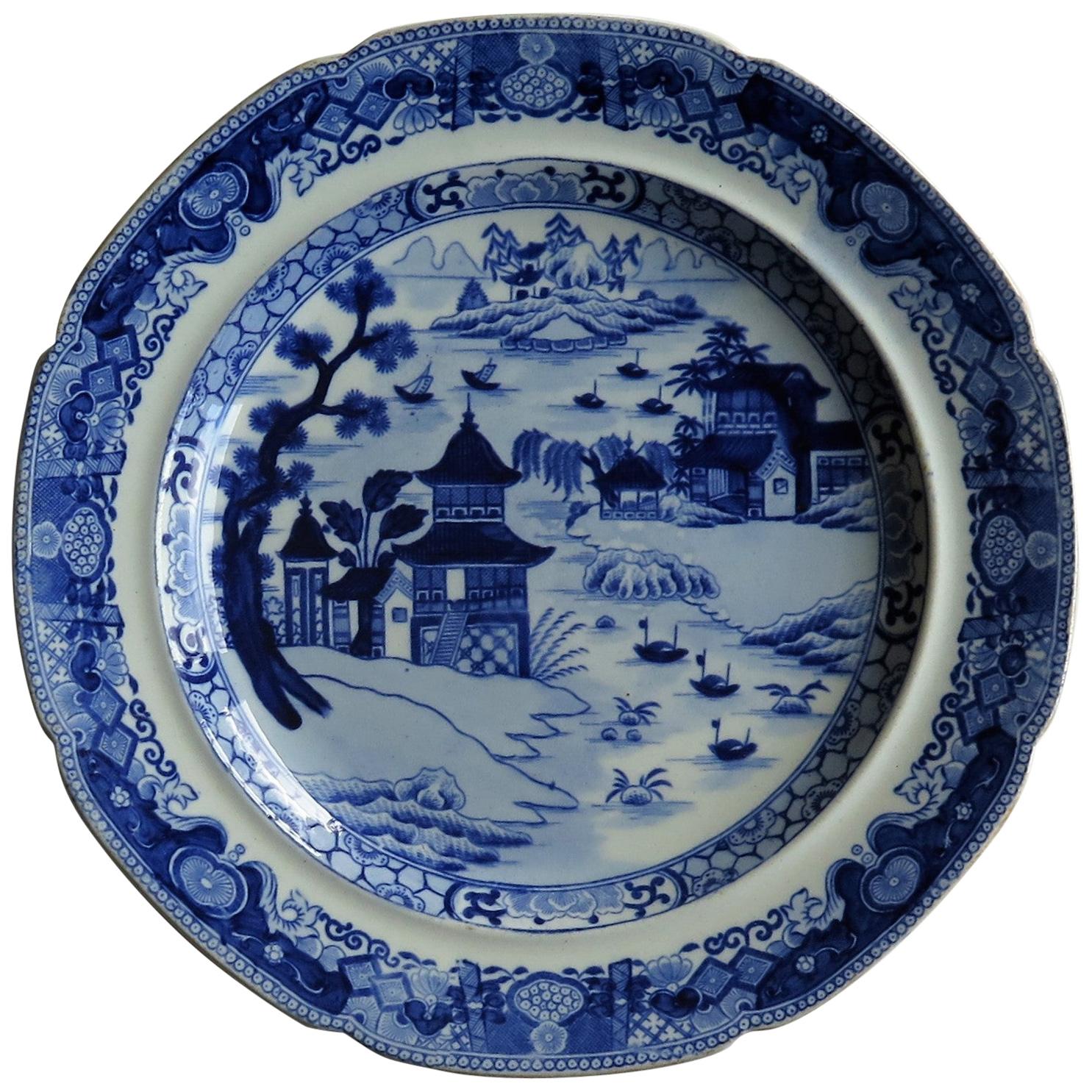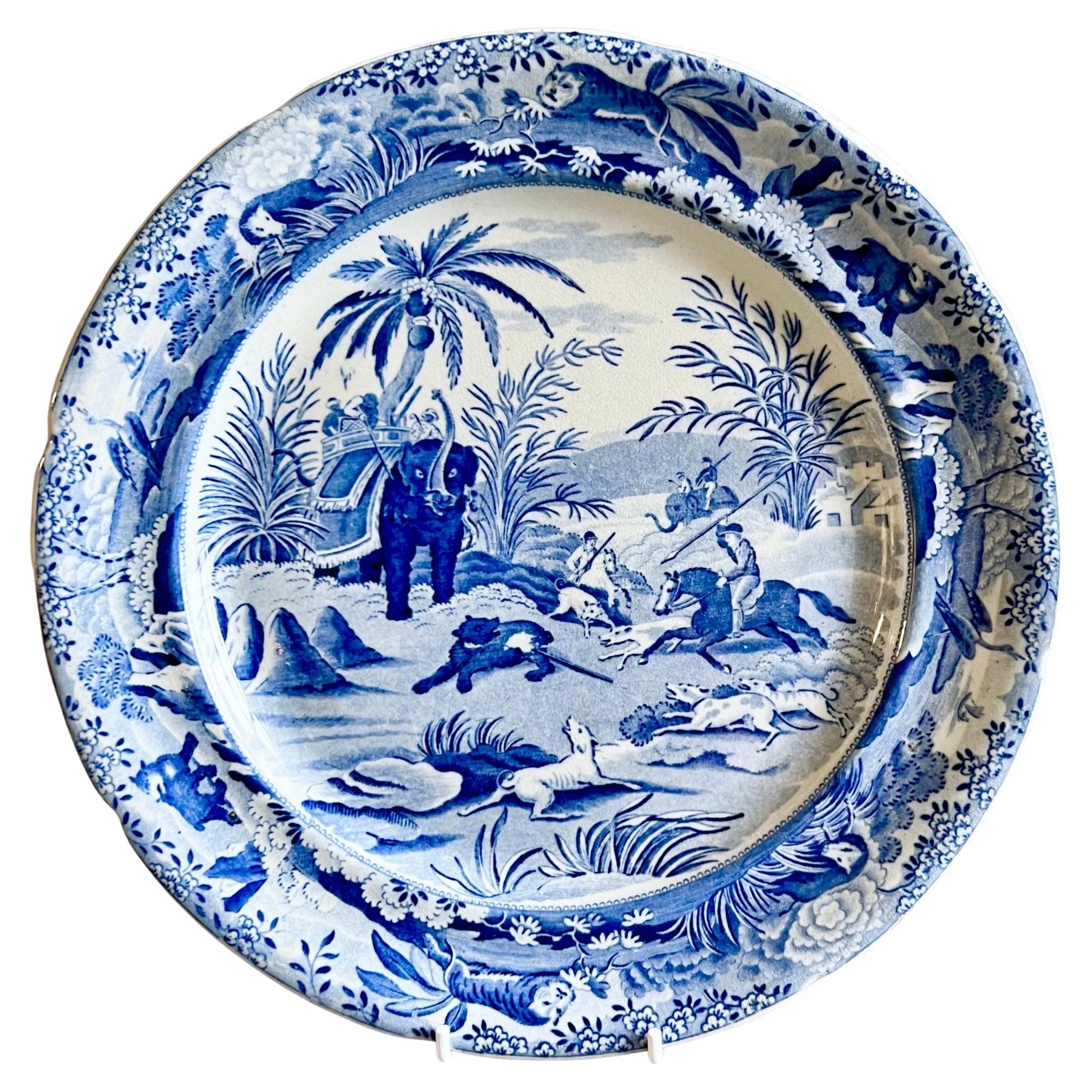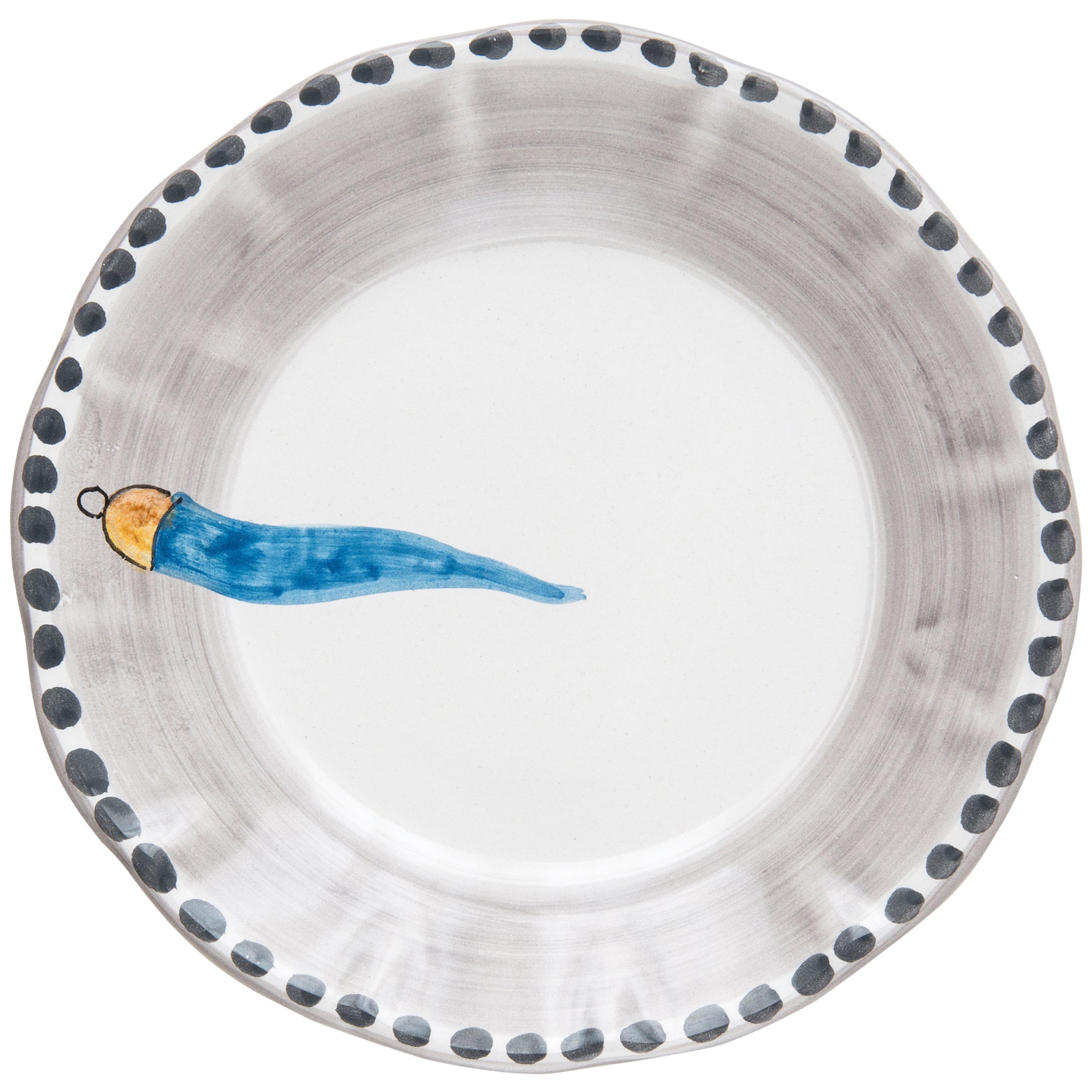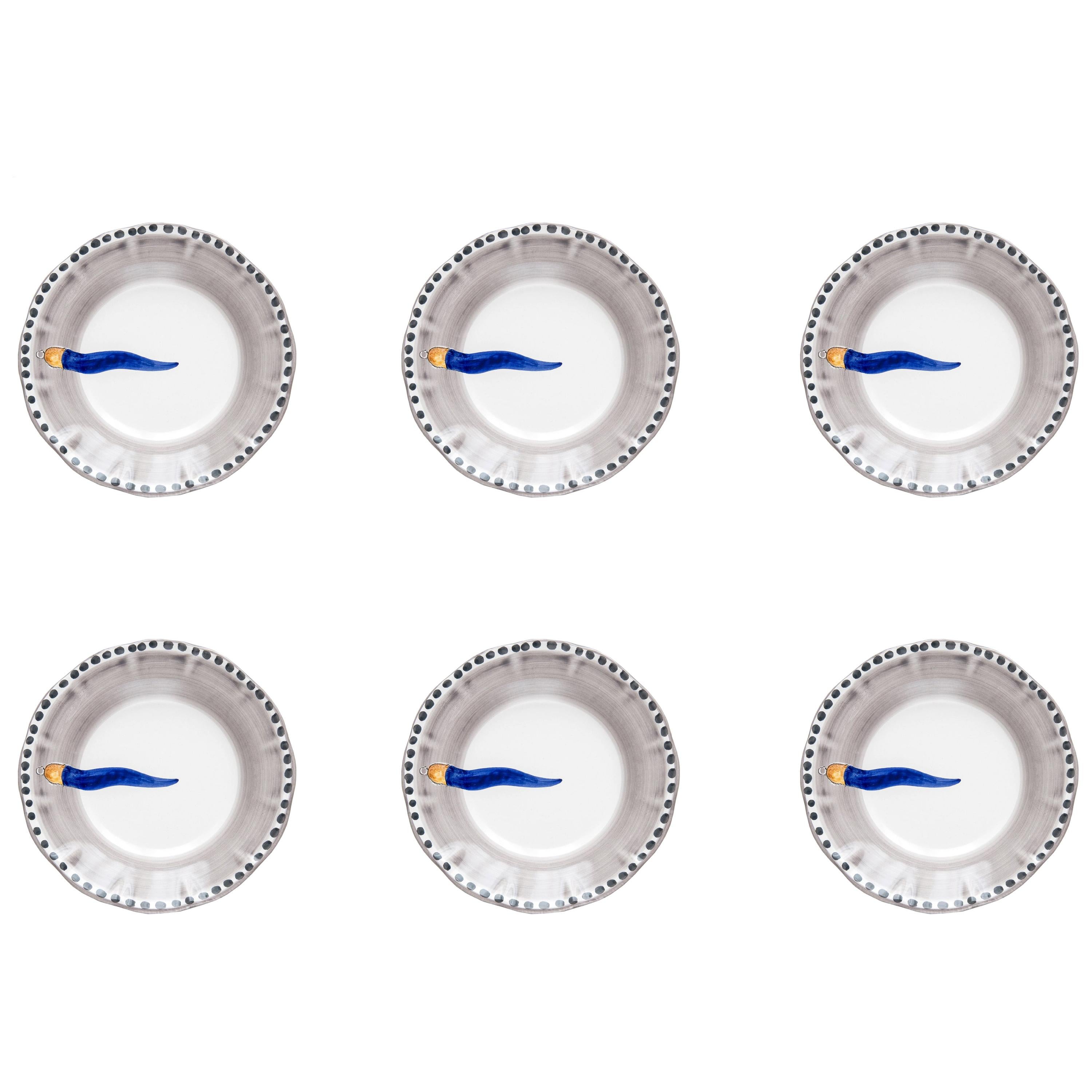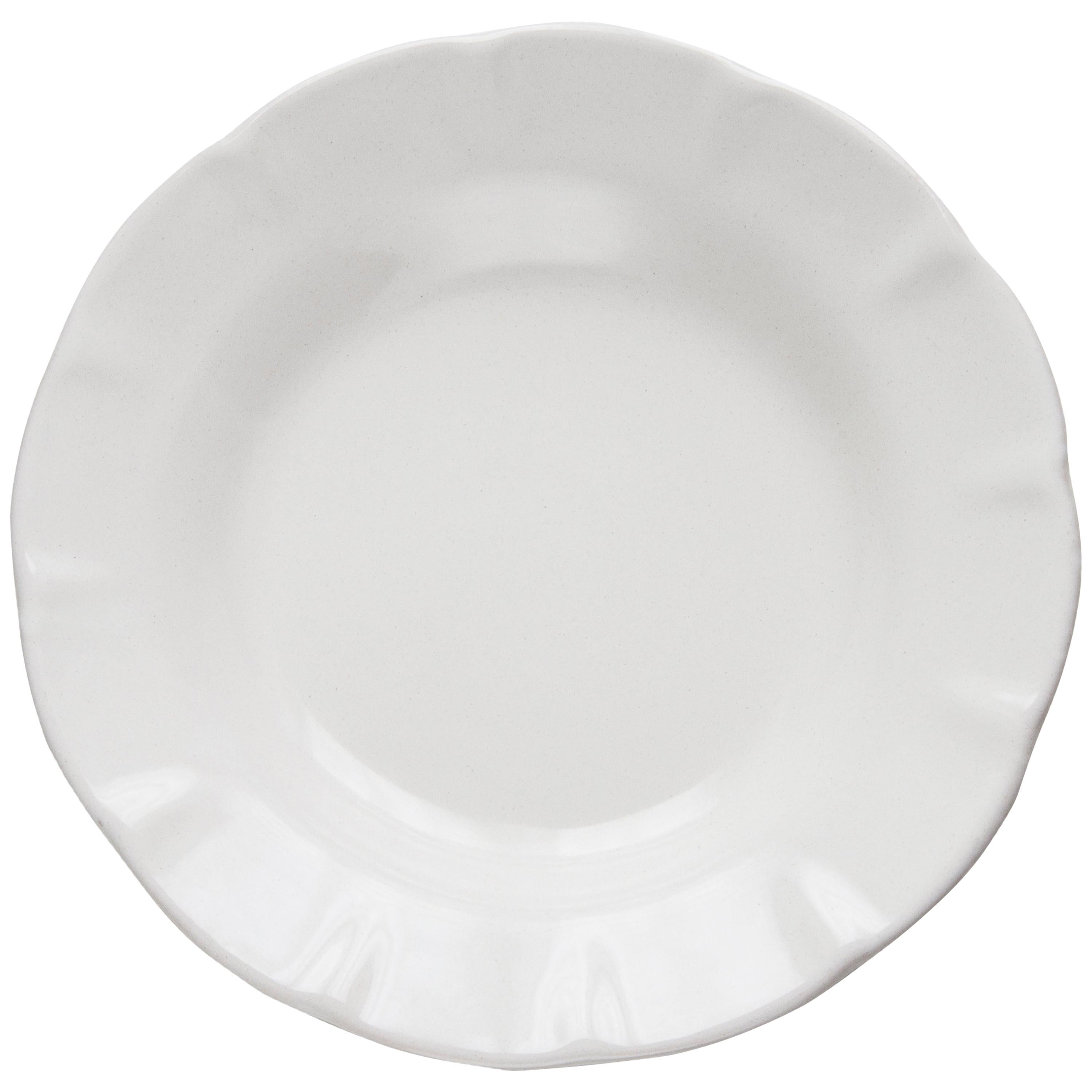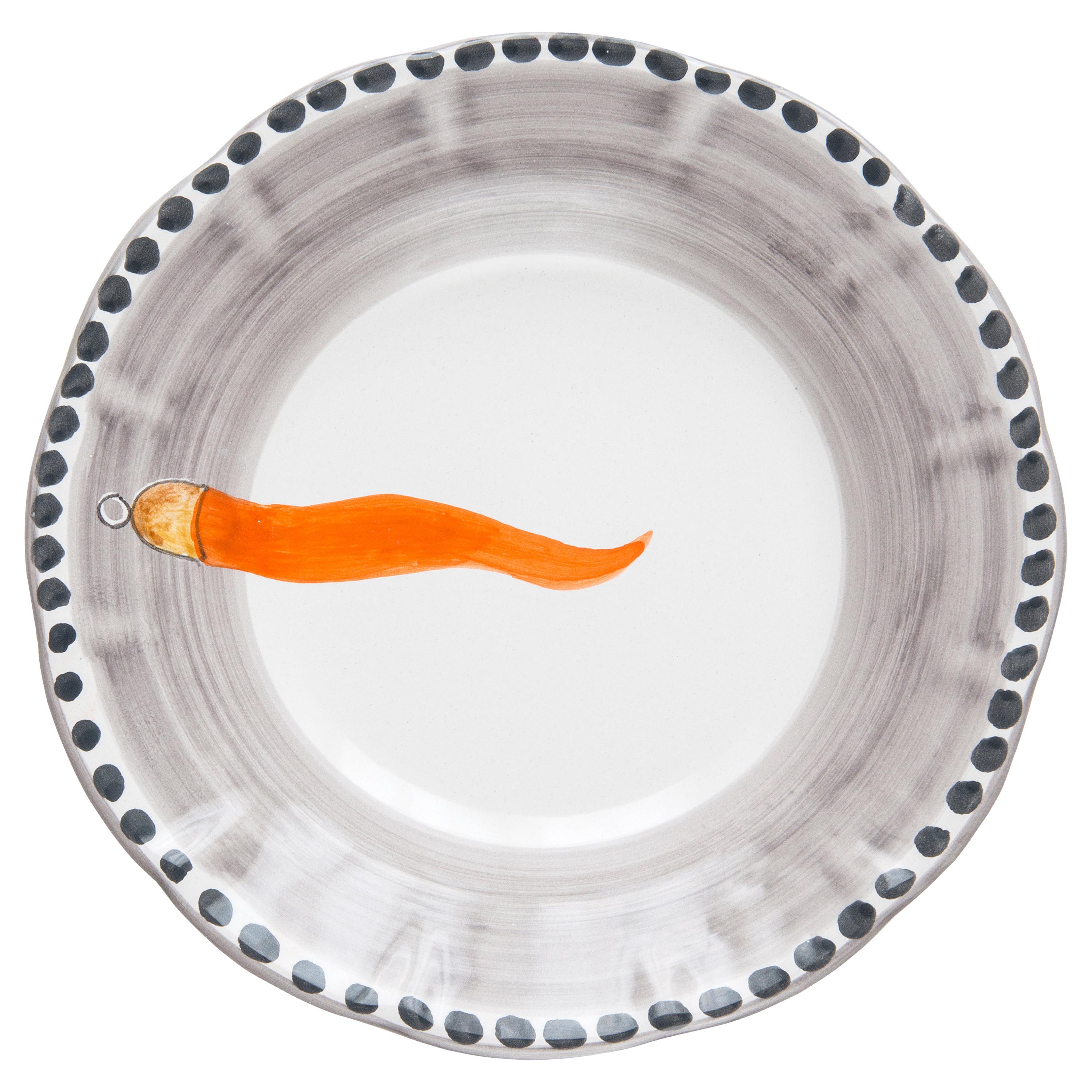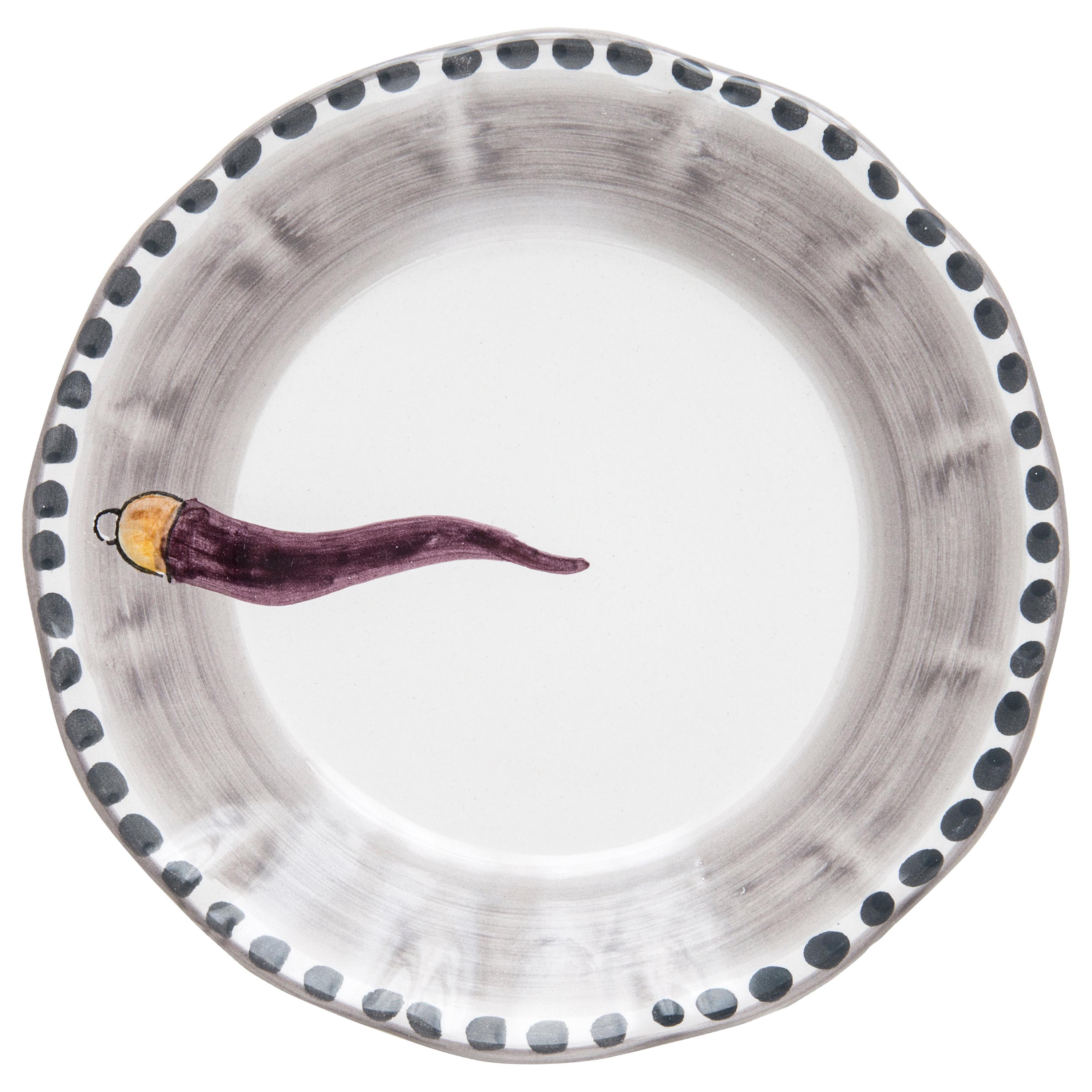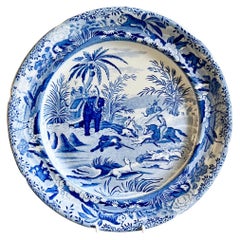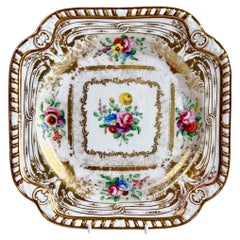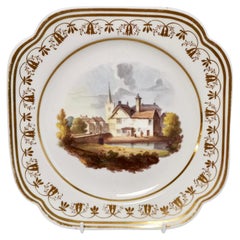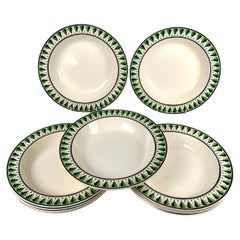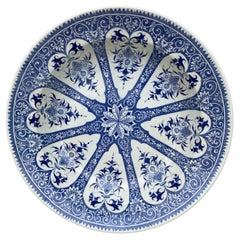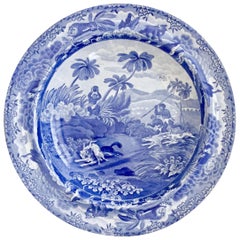
Spode Pearlware Soup Plate, Blue and White "Chase After A Wolf", 1815-1833
View Similar Items
Spode Pearlware Soup Plate, Blue and White "Chase After A Wolf", 1815-1833
About the Item
- Creator:Spode (Maker)
- Dimensions:Height: 1.65 in (4.2 cm)Diameter: 9.65 in (24.52 cm)
- Style:Regency (Of the Period)
- Materials and Techniques:
- Place of Origin:
- Period:
- Date of Manufacture:1815-1833
- Condition:Wear consistent with age and use. no damage or wear, only a bit of crazing that is only visible on the underside.
- Seller Location:London, GB
- Reference Number:Seller: A-SPO28a1stDibs: LU4805116292521
Spode
Spode is one of the oldest and most distinguished of the great pottery companies of Staffordshire, the time-honored home of English ceramics. The firm’s blue and white bone china transferware is a timeless classic. Spode dishes compose the sort of elegant dinner service that most of us envision on a traditional holiday table.
The company was established in 1770 in Stoke-on-Trent by Josiah Spode, a friend and neighbor of another estimable English ceramist, Josiah Wedgwood. Spode was particularly known for two technical achievements in the firm’s early decades. The first was to develop a standard formula for the making of bone china — a type of porcelain (made with a mixture of bone ash, minerals and clay) that is dazzlingly white and so strong it can be used to create very thin translucent plates and vessels. The other was to perfect the making of transferware. That process involves the transfer of pictorial images inked on tissue paper — such as the garden scenery in the famous Willow dish patterns — onto ceramics that are then sealed with a glaze. In 1833, following the sudden death of Josiah Spode III, business partner W.T. Copeland took over the company and changed its name. Collectors regard Copeland-marked pieces as Spode china. The Spode brand was revived in 1970.
From the 1820s onward, Spode enjoyed tremendous success both in Britain and elsewhere owing to the beauty and vitality of its decorative imagery. By some counts, Spode created more than 40,000 patterns in the 19th century. Many favorite Spode patterns — among them Blue Italian, India Tree, Greek and Woodland — date to the company’s early years. Spode’s most popular pattern, Christmas Tree, was introduced in 1938. Prices for Spode china vary widely, based on the size of the service, its condition and the pattern. An antique dinner service for 12 people or more, in good repair and complete with cups and serving dishes, will generally cost between $10,000 and $20,000. Such Spode services become heirlooms — a proud and timeless addition to a family’s table. And as you will see on these pages, Spode’s rich and varied wares offer a visual feast in and of themselves.
- Edward Challinor Pearlware Plate, Blue and White "Death of a Bear", circa 1850By SpodeLocated in London, GBThis is a beautiful dinner plate made in about 1850 by Edward Challinor. The plate is made of pearlware and decorated with a blue and white transfer print that is a close copy of Spode' famous "Indian...Category
Antique 1850s English Regency Porcelain
MaterialsPearlware
$256 Sale Price20% OffFree Shipping - Spode Felspar Square Dessert Plate, Gilt and Flowers, Regency 1824By SpodeLocated in London, GBThis is beautiful square dessert plate made by Spode around the year 1824. The set was made in the famous Spode Felspar china, which was a bright porcelain that included felspar rock, making it exceptionally robust and very suitable for large table services. This plate was a spare of a large dessert service that was sold previously. An identical service is on display in the Spode Museum in Stoke on Trent, on the original place where this service was produced. In a wonderful moment of serendipity, I happened to be standing and admiring that service exactly the moment the service this plate belonged to came up for auction - and I won the bid, enabling me to present it here to you! Josiah Spode was the great pioneer among the 19th Century potters in England. Around the year 1800 he perfected the bone china recipe that has been used by everyone ever since, and he was also the leading potter behind perfecting the technique of transferware, making it possible for English potters to replace the Chinese export china, which had come to an end around that time, with their own. This was fundamental to a thriving industry that would last for about 150 years and provide half the world with their tableware. In the early 19th Century Spode also made this "Felspar" porcelain, which was even stronger thanks to a large percentage of the strong felspar rock in the recipe. In the early 19th Century, dinner and dessert services were an important part of the social life of the elite, and particularly the dessert service had to be stunning in order to leave guests with a lasting impression of the wealth and power of the owner. This plate is part of such a show piece. The plate has the printed Spode Felspar Porcelain mark in puce, as well as a hand painted pattern number 3765. CONDITION REPORT The plate is in good undamaged antique condition, with its only flaw being some wear as visible in the pictures. Antique British porcelain...Category
Antique 1820s English Regency Porcelain
MaterialsPorcelain
$320 Sale Price20% OffFree Shipping - Spode Felspar Porcelain Plate, Landscape Painting, Regency ca 1822By SpodeLocated in London, GBThis is a dessert plate made by Spode in about 1822, which was the Regency era. The plate is made of Felspar porcelain and decorated with a beautiful hand painted landscape scene. The plate would have belonged to a large dessert service of which each piece had a unique landscape; in fact I sold a dessert service in this pattern a while ago. Spode was the great pioneer among the Georgian potters in England. Around the year 1800 he perfected the bone china recipe that has been used by British potters ever since, and he was also the leading potter behind the technique of transferware, making it possible for English potters to replace the Chinese export china...Category
Antique 1820s English Regency Porcelain
MaterialsPorcelain
$320 Sale Price20% OffFree Shipping - Spode Creamware Dessert Service, Avocado Green, Chinoiserie, Regency, 1814By SpodeLocated in London, GBThis is a beautiful Spode creamware dessert service made in 1814, which was the Regency era. The service is decorated in a printed and hand-colored Chi...Category
Antique 1810s English Regency Porcelain
MaterialsCreamware
$3,480 Sale Price / set20% OffFree Shipping - Spode Felspar Floral Dessert Service, Yellow, Butterfly Handles, circa 1822By SpodeLocated in London, GBThis is a stunning and very rare dessert service made by Spode in 1822, which was the Regency era. This beautiful service, which is in perfect condition, would be fantastic for a summer dinner party! The service is made of Felspar porcelain and decorated in a beautiful pale yellow colour with an "Oeil de Perdrix" pattern and top quality floral reserves. The service consists of two lidded sauce tureens with stands, two deep rectangular dishes, two lozenge shaped dishes, one square dish, and six square dessert plates Spode was the great Pioneer among the Georgian potters in England. Around the year 1800 he perfected the bone china recipe that has been used by British potters ever since, and he was also the leading potter behind the technique of transferware, making it possible for English potters to replace the Chinese export china...Category
Antique 1820s English Regency Porcelain
MaterialsPorcelain
- Spode Imperial China Dessert Service, Frog Pattern in Mauve, Regency circa 1828By SpodeLocated in London, GBThis is a very striking part dessert service made by Spode in about 1828, which is the Regency era. It is made of Spode's Imperial China and has the Frog pattern in mauve/purple. It consists of a high footed comport...Category
Antique 1820s English Regency Porcelain
MaterialsIronstone
- Eleven Large Creamware Soup Dishes Made by Spode England Circa 1820By SpodeLocated in Katonah, NYThis elegant set of eleven large creamware soup dishes from Spode, circa 1820, is a beautiful example of English neoclassical style. The acanthus leaf border, painted with bright en...Category
Antique Early 19th Century English Neoclassical Dinner Plates
MaterialsCreamware
- Early 19th Century Pearlware Dinner Plate Blue and White, StaffordshireBy StaffordshireLocated in Lincoln, LincolnshireThis is a beautiful early plate in a printed blue and white chinoiserie pattern and made of a type of earthenware pottery called pearlware, in the very early 19th century, by one of ...Category
Antique Early 19th Century English Chinoiserie Ceramics
MaterialsPearlware
- 19th Century French Blue & White Faience Soup Plate SarregueminesBy SarregueminesLocated in Austin, TX19th century French blue and white faience soup plate signed "Francois" Sarreguemines.Category
Antique 1880s French French Provincial Dinner Plates
MaterialsCeramic, Faience
- 21st Century Hand Painted Ceramic Soup Plate in Blue and White HandmadeBy Germana ScapellatoLocated in Milan, ITVietri collection - O'Curniciello - ceramic plates, created following a lengthy and complex production process. The first phase involves shaping the clay on the wheel, from which the...Category
21st Century and Contemporary Italian Ceramics
MaterialsCeramic
- SIX Georgian Davenport Ironstone Soup Bowls or Plates Bamboo Ptn 135, Circa 1815By Davenport PorcelainLocated in Lincoln, LincolnshireThis is a very good, late Georgian, Set of SIX ironstone Soup Bowls or Plates, in pattern no. 135, manufactured by the English Davenport factory, which was situated in Longport, Staffordshire, England between 1794 and 1887. These are well potted, large soup bowls...Category
Antique Early 19th Century English George III Ceramics
MaterialsIronstone
- Georgian Davenport Ironstone Soup Plate or Bowl Bamboo & Peony Ptn 15, Ca 1815By Davenport PorcelainLocated in Lincoln, LincolnshireThis is a good, late Georgian, ironstone Soup Bowl or Plate, in pattern no. 15, manufactured by the English Davenport factory, which was situated in Longport, Staffordshire, England between 1794 and 1887. This oriental garden pattern is transfer printed in cobalt blue of different shades, with hand gilded detail around the inner and outer rims. The pattern is called "Bamboo and Peony" which is Davenport's pattern number 15, a very early pattern and probably copied from a Chinese original. This exact pattern is illustrated on a plate in Godden's Guide to Ironstone, by Geoffrey A Godden, page 230, plate 176. Davenport were one of the earliest producers of Ironstone along with Mason's, Spode and others and called their ironstone pottery wears "Stone China". On the back the plate carries the blue printed Davenport Stone...Category
Antique Early 19th Century English George III Ceramics
MaterialsIronstone


